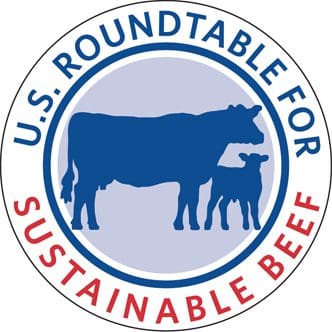By Jim Whitt, Contributing Editor
If you ask 100 people what sustainability is, you’ll likely get 100 different answers. So, the task of getting 100 people to agree on what sustainability is for an entire industry is a monumental task. But that is exactly what the U.S. Roundtable for Sustainable Beef (USRSB) set out to accomplish when it was formed in 2015.

Its 100-plus members represent cow-calf producers, auction markets, feedyards, packers, processors, retailers, food service organizations, academic organizations and conservation organizations. Those members connect the dots between industry segments and represent 30 percent of the cattle herd, more than 20 billion pounds of processed beef and more than 70 million consumers across the United States.
USRSB members and others convened May 1-4 for their 2018 General Assembly Meeting in Oklahoma City. Day one of the conference featured Lopez Foods, Inc., Express Ranches and the Tim Haines Ranch on an optional tour.
The meeting officially started the following morning with USRSB Chair Rickette Collins of the McDonald’s Corporation welcoming the group. Jan Johnson of Millennium Research, Inc., then facilitated an interesting and sometimes humorous panel discussion with consumers from the Oklahoma City area. Shawn Darcy, Director of Market Research at The National Cattlemen’s Beef Association followed up with insights from consumer research conducted by the association.
Attendees heard from several other panels and speakers throughout the day, including Dr. Tryon Wickersham, Texas A&M University associate professor; Nicole Johnson Hoffman, chief sustainability officer and senior V.P. for OSI Group; Monica Hadarits, programs and certification director at the Canadian Roundtable for Sustainable Beef; and Rod Snyder, president of Field to Market. Wednesday’s session ended with the business meeting and a reception at the National Cowboy & Western Heritage Museum.
The highlight of the day was the unveiling of the USRSB Sustainability Framework, which began taking shape in 2016. Development of the framework began by focusing on two questions: 1) What areas are most important to the beef value chain? and 2) How can each segment of the chain assess and measure progress within each area? More than 80 USRSB members participated in working groups within each value chain sector (cow-calf producers, auction markets, feedyards, packers, processors, retail and food service organizations) to develop the answers to these questions into indicators and metrics. Allied industry members, academics and conservation organizations also provided input.
The high priority indicators are:
- Animal Health and Well-Being: The cumulative effects of cattle heath, nutrition, care and comfort.
- Efficiency and Yield: Efficiency is the unit of input required to produce a unit of output, and yield is the total product generated per unit of time or space. Both concepts address waste as a negative characteristic and strive toward improved profitability.
- Water Resources: The volume of water consumed and any impacts on water quality.
- Land Resources: The stewardship of terrestrial and aquatic habitat in relation to water, soil and biodiversity in an area. Impacts of land use and land use conversion, both caused by and prevented by ranching and farming activities.
- Air and Greenhouse Gas Emissions: The cumulative emissions of pollutants, including particulate matter, greenhouse gases and other gaseous emissions from a sector for each process.
- Employee Safety and Well-Being: The implementation of safety programs and training to provide a safe workplace and help to prevent workplace accidents and injuries associated with production, processing, and distribution of beef and the relative prosperity of workers employed in those activities.
Clayton Huseman, executive director of the Kansas Livestock Association’s Feedlot Division, has served as co-chair of the Engagement Measurement and Progress Working group. This group was tasked with the development of the Sustainability Assessment Guides. He worked closely with the feedyard and cow-calf leadership on their segments.
“The USRSB approach to sustainability is one that not only involves each segment of the beef supply chain, but it lets each segment decide what’s in bounds and out of bounds when it comes to sustainability for their segment,” Huseman said. “Each segment has been involved in the decision-making process, and each segment has probably pushed further than they would have without that open line of communication with the other segments.
“It creates a healthy dialog that helps find the right balance. Ultimately though, producers decide what works for them. This concept and approach is one that will hopefully result in good business decisions around key areas of sustainability for each segment of the supply chain.”
USRSB opened a 60-day public comment period for their Sustainability Framework on May 3.
The meeting concluded Thursday morning with the USRSB Board of Directors meeting, an update of USRSB Supported Projects and a discussion of Sustainability Assessment Guides, which are intended to assist sustainability efforts by providing site-level assessment tools, decision support systems, resources and materials.







